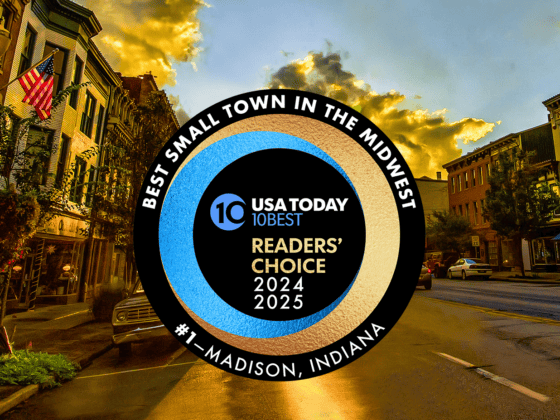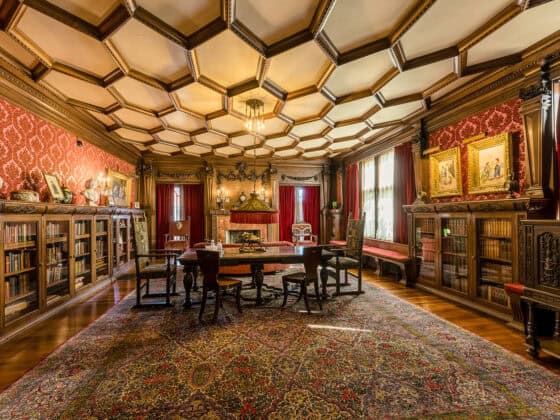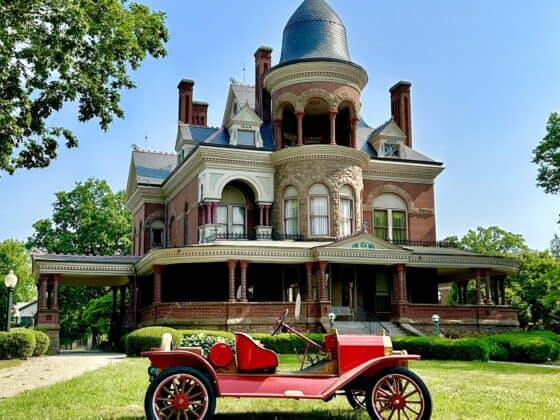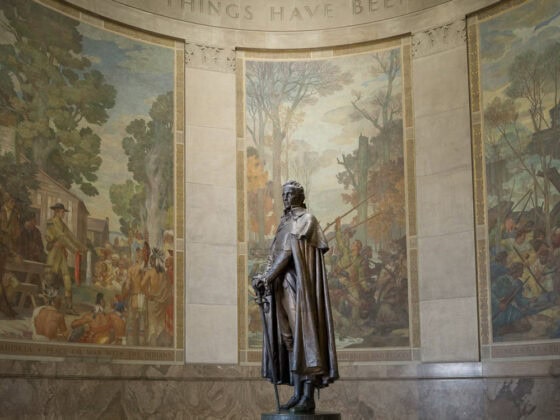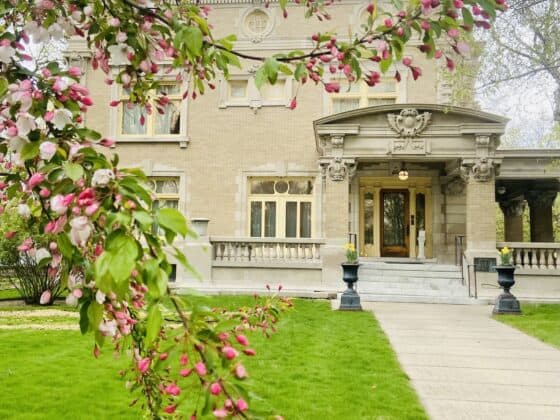by Elizabeth Granger
Museums across Indiana commemorate the state’s history, honor its eccentricities and celebrate the human progress that has been made up to the present moment. And nowhere is this more evident than at the Eiteljorg Museum of American Indians and Western Art in Indianapolis, where pieces by Native American, Latino, Asian, European and African American artists are on display.
“We are focused on cultural diversity,” says Eiteljorg’s public relations manager Bryan Corbin. “That includes the diversity of Native Americans from across North America and specifically the art of all of the American West. Our mission is to bring diverse peoples together, educate, and bring understanding to our shared heritage in impactful ways.”
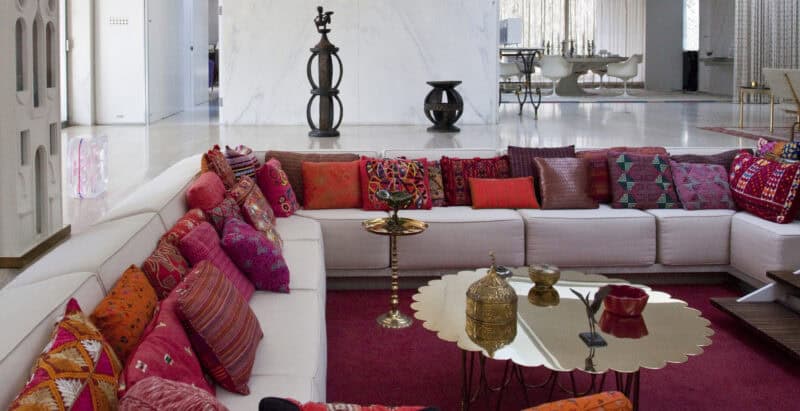
Diversity is a part of the Gennett exhibit at the Wayne County Historical Museum in Richmond, too. Spread throughout the museum, the exhibit is designed to incorporate the entire story of Gennett, whose 1920s recording studio provided opportunities for unknown musicians to record their music, including Blacks who were unable to record elsewhere.
“This is a big story to tell,” said Karen Shank-Chapman, museum executive director. “It’s a story of all of us in America and how music affects us.”
Among those musical artists were Louis Armstrong, Jelly Roll Morton and Duke Ellington. The museum also includes a mummy, a collection of early automobiles and an 1880s dollhouse.
Other museums tell local stories. The History Museum in South Bend, the History Center in Fort Wayne and the Wabash County Historical Museum in Wabash all reflect what happened there in the past.

Shelbyville’s Grover Center showcases a railroad diorama with running trains to observe its history as the first community west of the Allegheny Mountains to have a railroad. Other exhibits invite visitors to ride a re-created interurban train car into “Old Shelby,” a unique experience where guests literally walk through the streets of a life-size village set during the early 1900s. Here you can take in artifacts that are displayed in each of the storefronts, and explore a hotel, saloon, hardware store, school, store, sheriff’s office and more. As an added bonus, admission to the Grover Center is free.
Some museums are more about special interests than they are the places where they are located. The Mid-America Windmill Museum in Kendallville is dedicated to preserving working windmills, so in their barn and on their grounds you’ll see more than 50. The Great American Songbook in Carmel honors music that began in the early 20th century and became perennially popular, and the Glass Museum in Dunkirk recognizes items made of glass from all over the world. The Rotary Jail Museum in Crawfordsville has the only rotary jail in existence that is still operational – and it rotates during tours. The French Lick West Baden Museum wows visitors with a circus diorama that fills a room, and the Circus City Festival Museum in Peru delights with artifacts from shows of the past.
Sports mascots are highlighted in the Mascot Hall of Fame in Whiting. The Indiana Basketball Hall of Fame is in New Castle, the Indianapolis Motor Speedway Museum in Speedway, the NCAA Hall of Champions in Indianapolis.

Early autos are in the Auburn Cord Duesenberg Automobile Museum in Auburn, along with the National Auto & Truck Museum and the Ford V-8 Foundation museum. The RV/MH Hall of Fame in Elkhart allows guests to walk among RVs and motor homes that date back to World War I, and experience eight decades of the RV and Manufactured Housing industries.
Trains are the stars at the Monon Connection Train Museum in Monon which has more than 65,000 pieces of train memorabilia, and at the Hoosier Valley Railroad Museum in North Judson. Planes? The Grissom Air Museum in Peru has many from the Cold War era on display outside as well as smaller artifacts and a flight simulator inside.
Kids are the focus at the Koch Family Children’s Museum of Evansville, where they can learn to solve problems, illustrate their ideas, foster a healthy lifestyle and see how everyday items function. “Our role at the Children’s Museum of Evansville (cMoe) is to create extraordinary experiences that ignite the imaginations of children and families through the power of play,” says Nate McCullough-Haddix, the museum’s deputy director. “ The community looks to cMoe as a fun and innovative childhood development resource for children and families, a place to play, discover, and learn together. It is an important part of the quality of life for families—and it is the only place of its kind in the region.”

Conner Prairie in Fishers invites families to explore an 1816 Lenape Indian Camp, see a village decimated by the Civil War and take a journey in a tethered balloon. Plenty of trails and a four-story tree house provide opportunities for exercise and play.
The Lincoln Pioneer Village in Rockport harkens back to Abraham Lincoln’s growing-up years in Indiana, and the Red Skelton Museum of American Comedy in Vincennes honors its hometown comedian. The James Dean Museum in Fairmount showcases the actor who starred in 1955’s “Rebel Without a Cause.”
A handful of museums focusing on individuals are Indiana State Historic Sites. One is the Levi and Catharine Coffin State Historic Site in Fountain City, which tells the story of the abolitionists’ work. Two historic sites – Limberlost and the Gene Stratton-Porter site in northern Indiana – recall Porter and her love of nature.
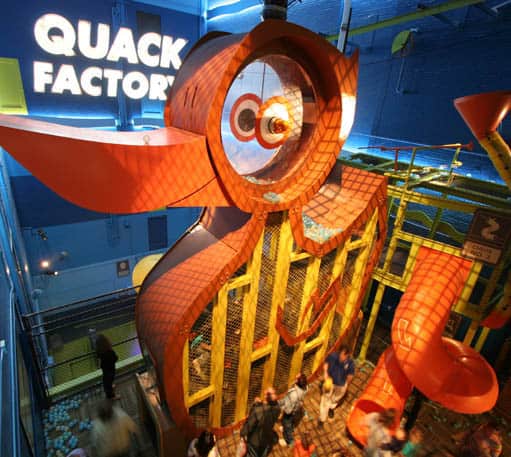
Other individuals’ homes that have become museums include the Seiberling Mansion and the Elwood Haynes Museum in Kokomo, the General Lew Wallace Study & Museum in Crawfordsville, the Lanier Mansion in Madison and the mid- century modern Miller House is in Columbus.
Minnetrista in Muncie is a 40-acre campus that includes the historic homes of the Ball family. The one where Bob Ross filmed his “Joy of Painting” series now hosts “The Bob Ross Experience,” and art exhibits and a Nature Center round out the experience.
Art museums throughout the state display both local works and pieces by artists across the world. The crown jewel is Newfields in Indianapolis, but another with a significant collection is the David Owsley Museum of Art with 11,000 items in its worldwide collection on the Ball State University campus in Muncie. In Bloomington the Eskenazi Museum of Art at Indiana University that houses Picassos, Pollocks and Monets along with treasures from antiquity and pieces from sub-Saharan Africa. In Elkhart the Midwestern Museum of American Art is home to pieces by artists from across the country that include Thomas Hart Benton, Grant Wood and Andy Warhol. And at the Brauer Museum of Art, located on Valparaiso University’s campus, you’ll find a nationally- recognized art collection, and admission is always free.
Throughout the state, museums big and small share Hoosier stories. Ask tourism bureaus for ideas. Because some museums are seasonal, check before visiting.





